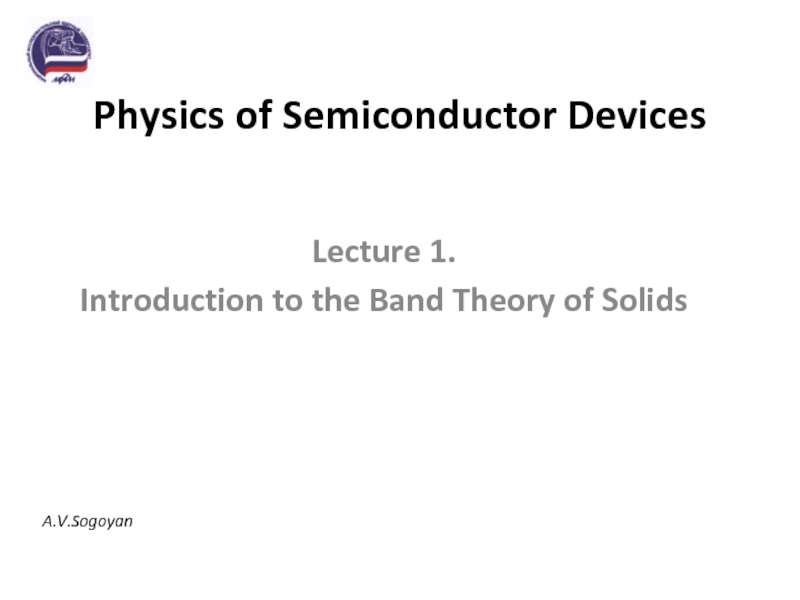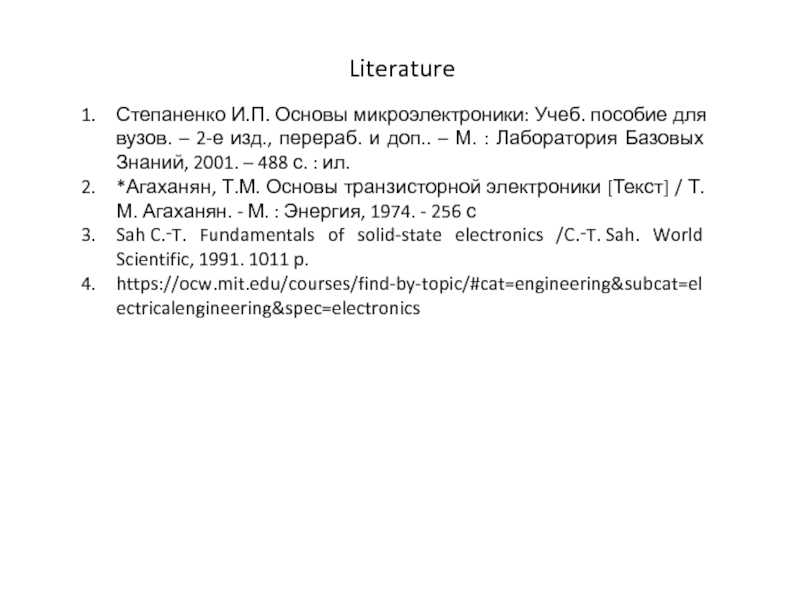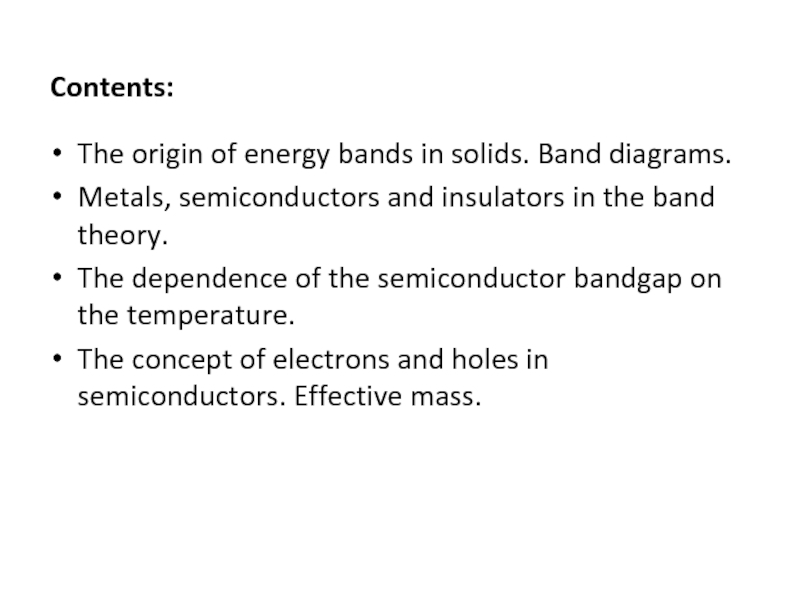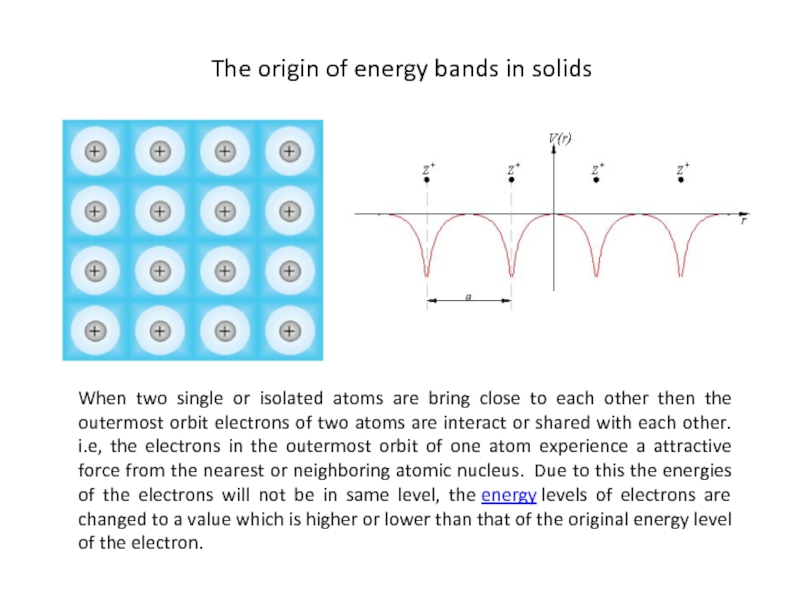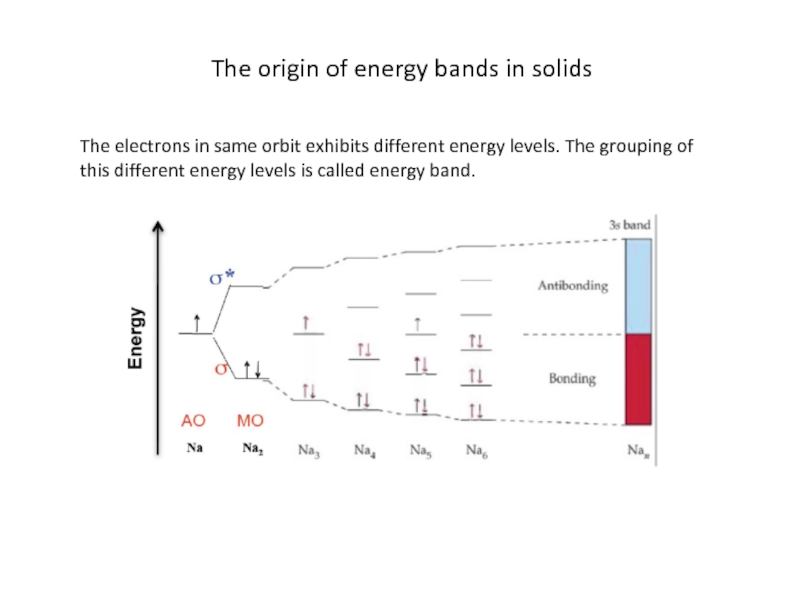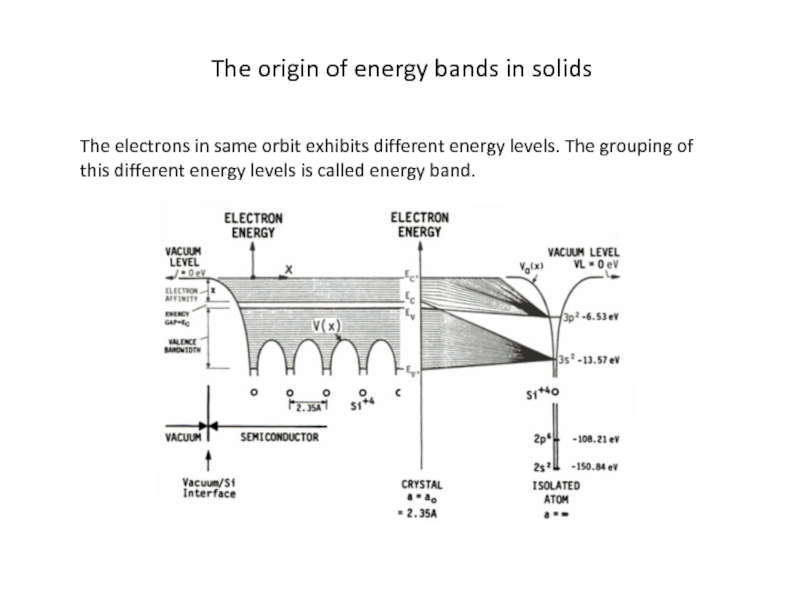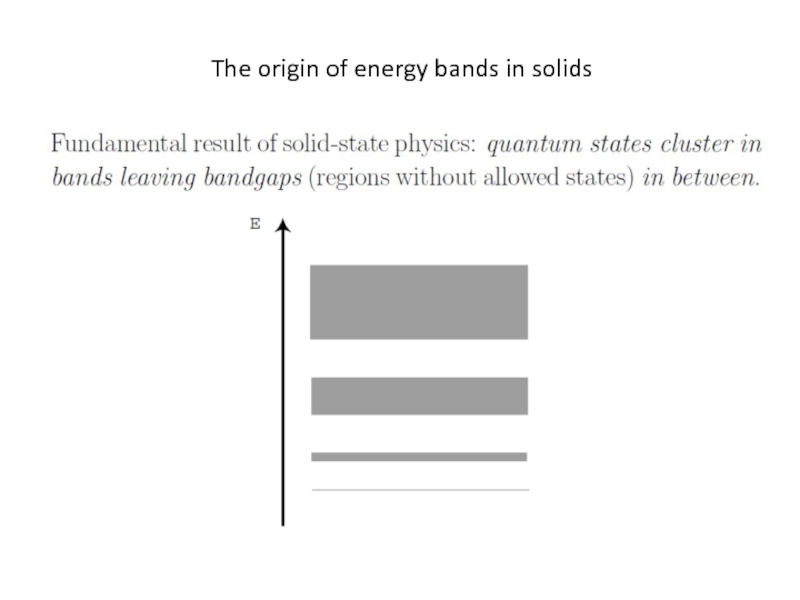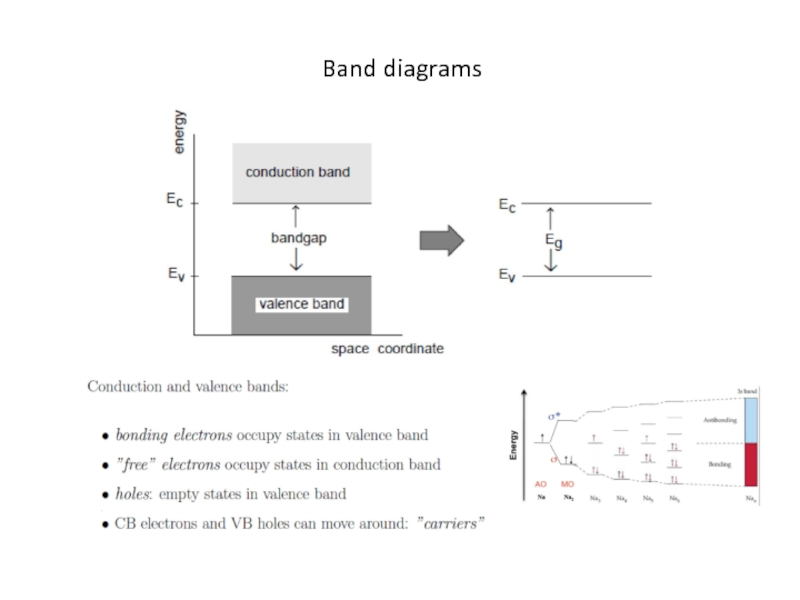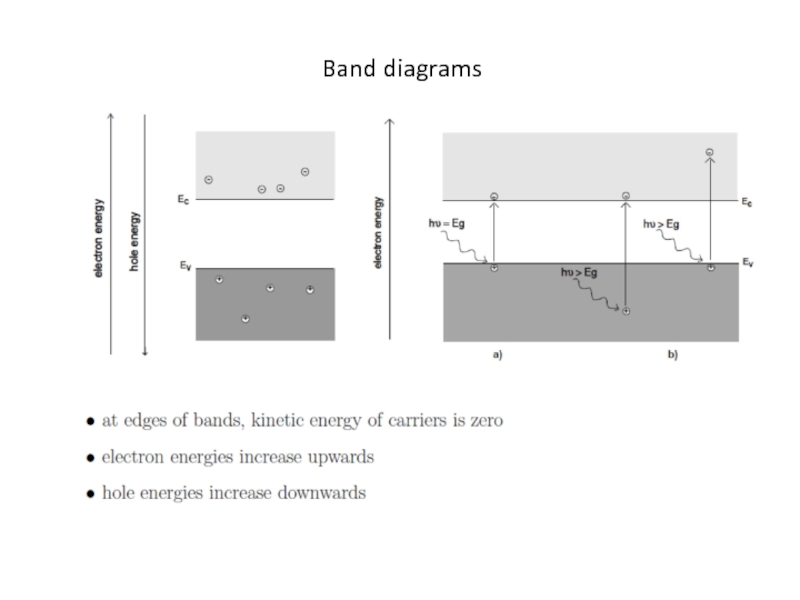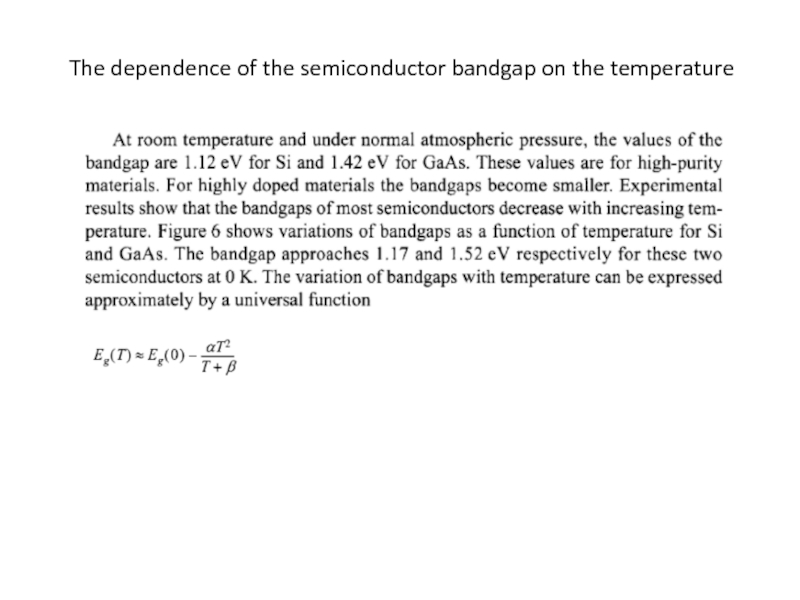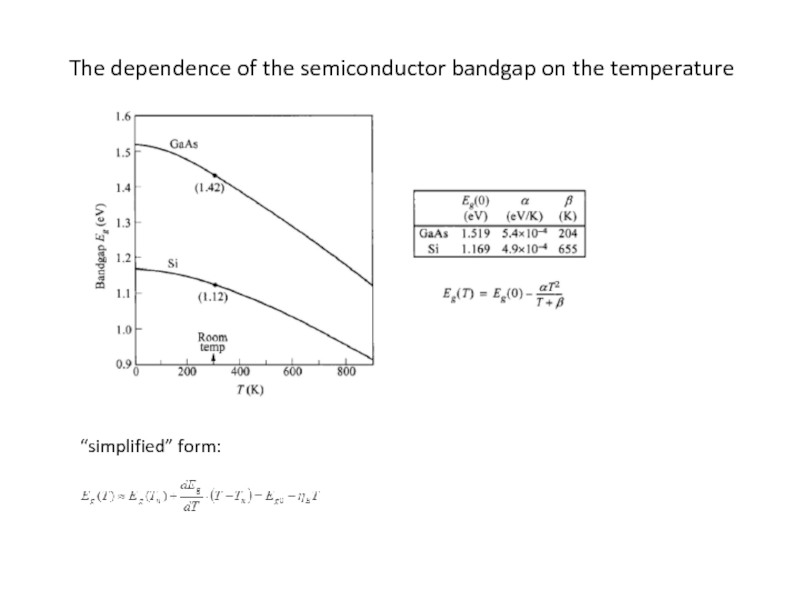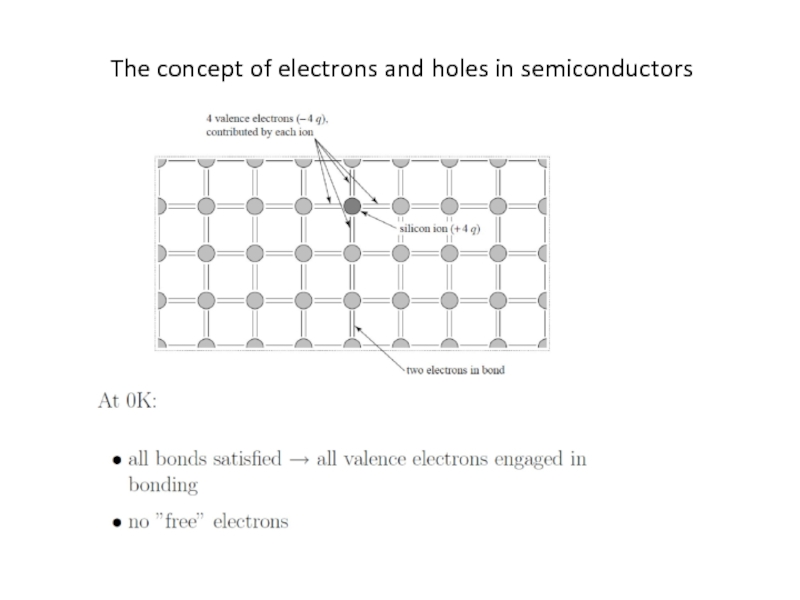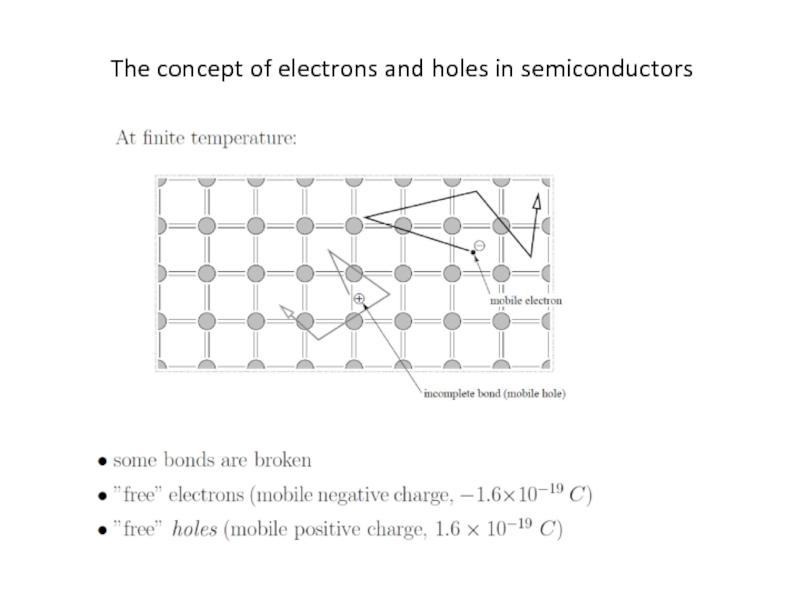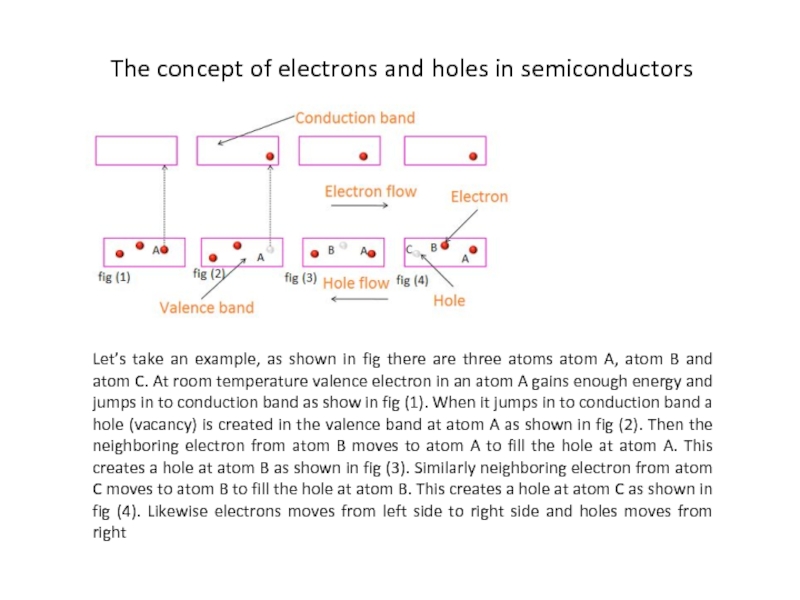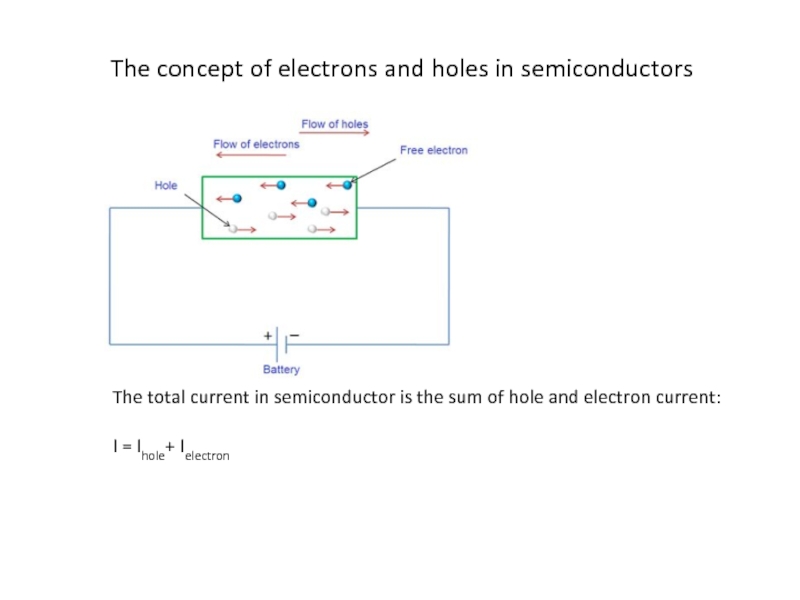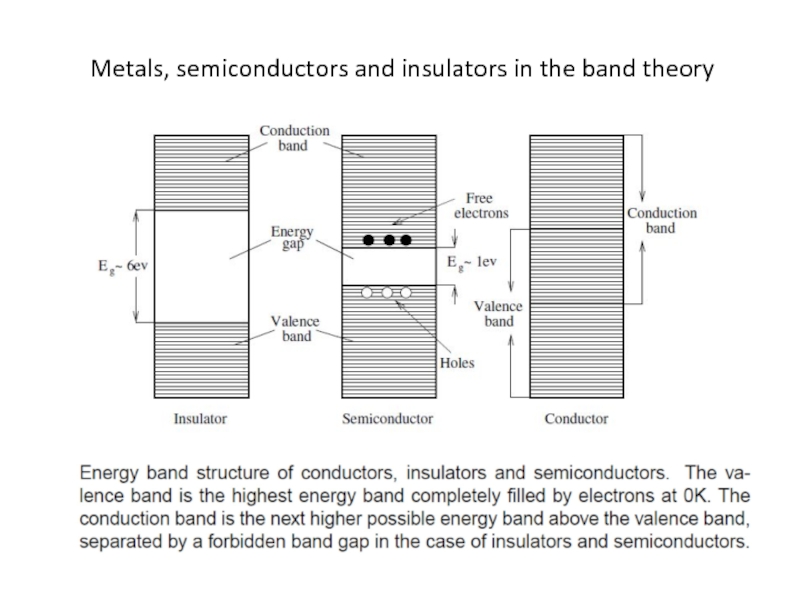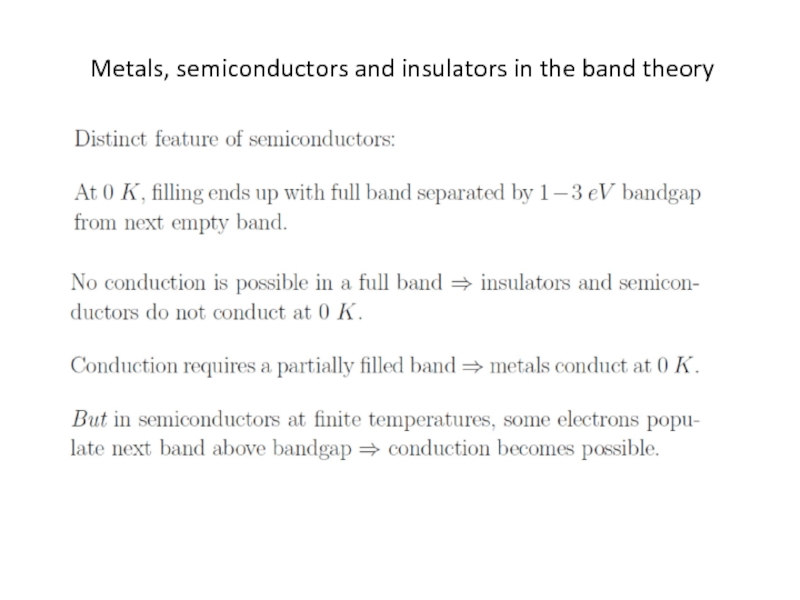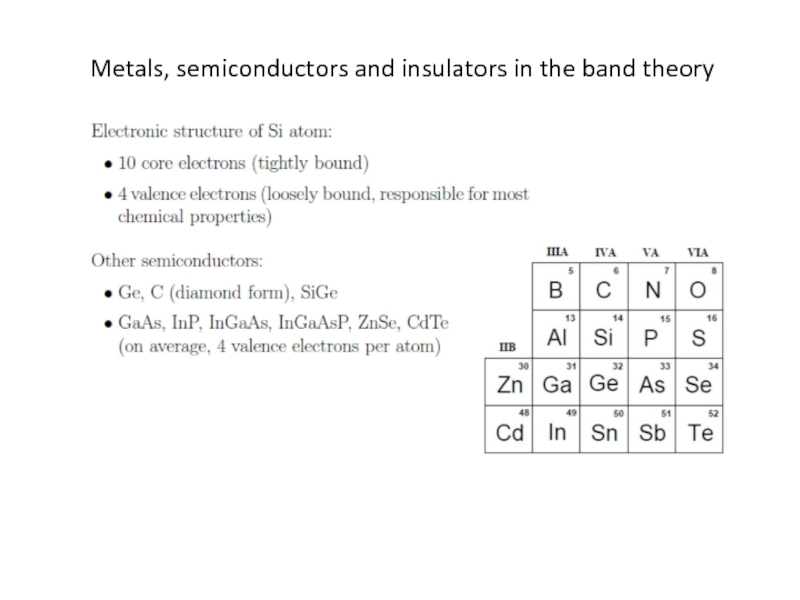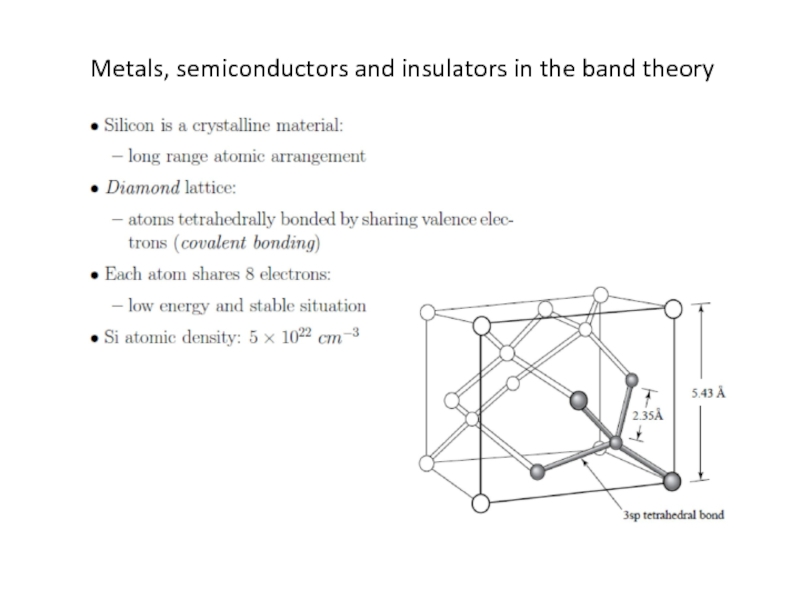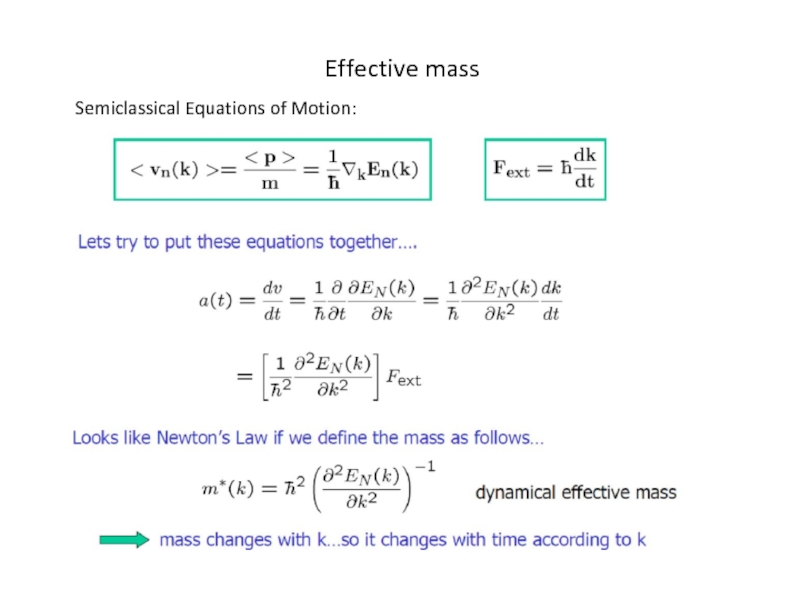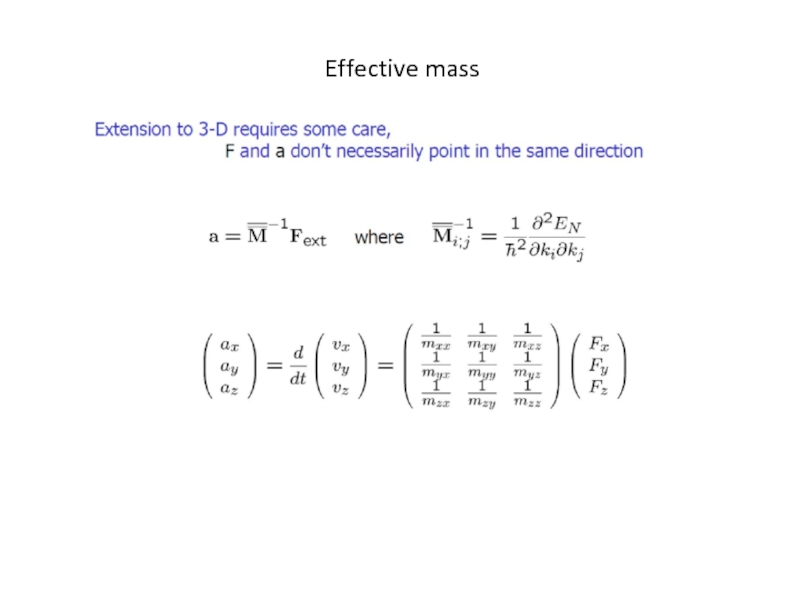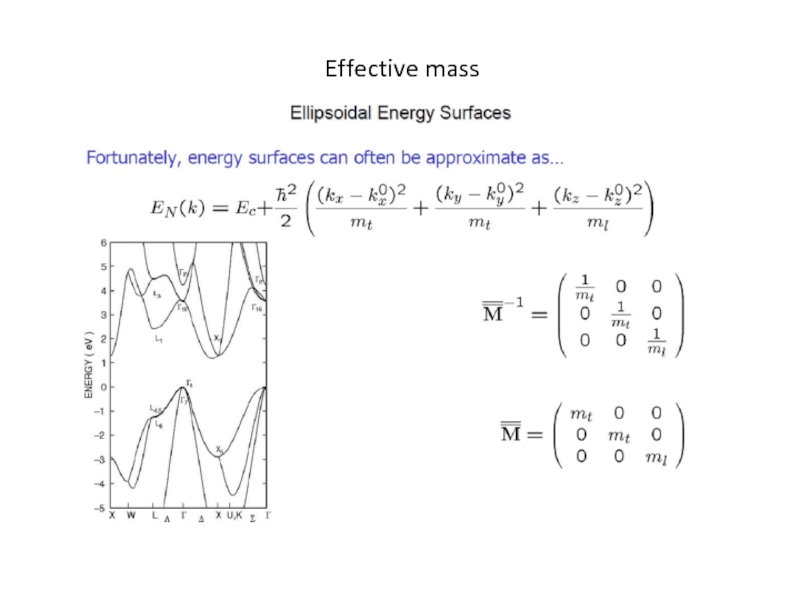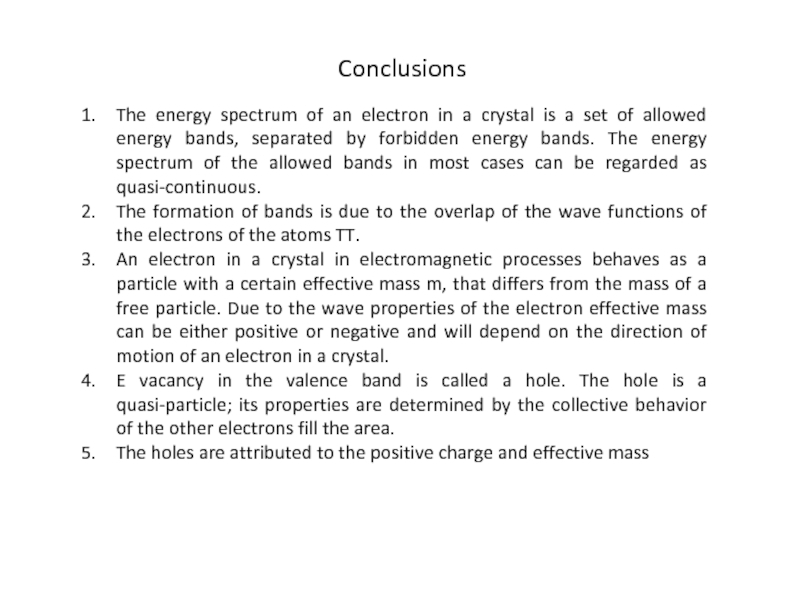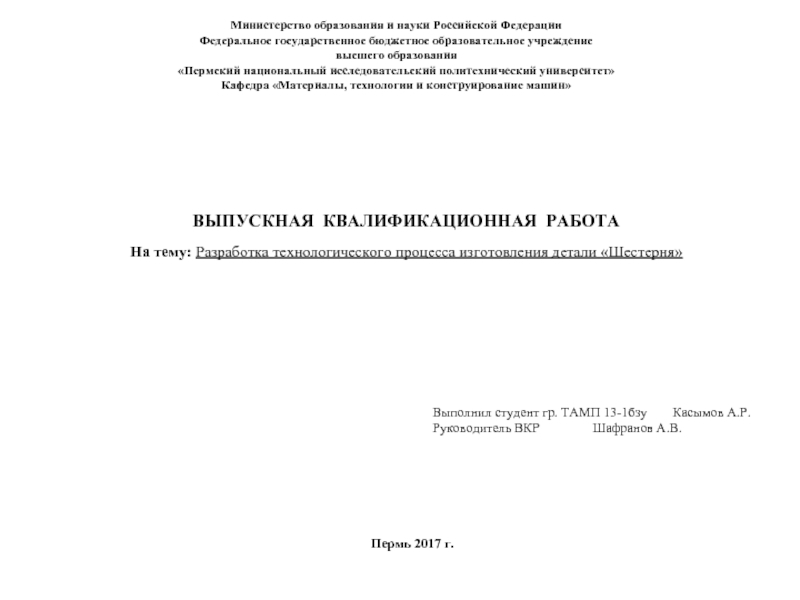A.V.Sogoyan
- Главная
- Разное
- Дизайн
- Бизнес и предпринимательство
- Аналитика
- Образование
- Развлечения
- Красота и здоровье
- Финансы
- Государство
- Путешествия
- Спорт
- Недвижимость
- Армия
- Графика
- Культурология
- Еда и кулинария
- Лингвистика
- Английский язык
- Астрономия
- Алгебра
- Биология
- География
- Детские презентации
- Информатика
- История
- Литература
- Маркетинг
- Математика
- Медицина
- Менеджмент
- Музыка
- МХК
- Немецкий язык
- ОБЖ
- Обществознание
- Окружающий мир
- Педагогика
- Русский язык
- Технология
- Физика
- Философия
- Химия
- Шаблоны, картинки для презентаций
- Экология
- Экономика
- Юриспруденция
Physics of Semiconductor Devices презентация
Содержание
- 1. Physics of Semiconductor Devices
- 2. Literature Степаненко И.П. Основы микроэлектроники: Учеб. пособие
- 3. Contents: The origin of energy bands in
- 4. The origin of energy bands in solids
- 5. The origin of energy bands in solids
- 6. The origin of energy bands in solids
- 7. The origin of energy bands in solids
- 8. Band diagrams
- 9. Band diagrams
- 10. The dependence of the semiconductor bandgap on the temperature
- 11. The dependence of the semiconductor bandgap on the temperature “simplified” form:
- 12. The concept of electrons and holes in semiconductors
- 13. The concept of electrons and holes in semiconductors
- 14. The concept of electrons and holes in
- 15. The concept of electrons and holes in
- 16. Metals, semiconductors and insulators in the band theory
- 17. Metals, semiconductors and insulators in the band theory
- 18. Metals, semiconductors and insulators in the band theory
- 19. Metals, semiconductors and insulators in the band theory
- 20. Effective mass Semiclassical Equations of Motion:
- 21. Effective mass
- 22. Effective mass
- 23. Conclusions The energy spectrum of an electron
Слайд 1
Physics of Semiconductor Devices
Lecture 1.
Introduction to the Band Theory of
Solids
Слайд 2Literature
Степаненко И.П. Основы микроэлектроники: Учеб. пособие для вузов. – 2-е изд.,
перераб. и доп.. – М. : Лаборатория Базовых Знаний, 2001. – 488 с. : ил.
*Агаханян, Т.М. Основы транзисторной электроники [Текст] / Т. М. Агаханян. - М. : Энергия, 1974. - 256 с
Sah C.‑T. Fundamentals of solid-state electronics /C.‑T. Sah. World Scientific, 1991. 1011 p.
https://ocw.mit.edu/courses/find-by-topic/#cat=engineering&subcat=electricalengineering&spec=electronics
*Агаханян, Т.М. Основы транзисторной электроники [Текст] / Т. М. Агаханян. - М. : Энергия, 1974. - 256 с
Sah C.‑T. Fundamentals of solid-state electronics /C.‑T. Sah. World Scientific, 1991. 1011 p.
https://ocw.mit.edu/courses/find-by-topic/#cat=engineering&subcat=electricalengineering&spec=electronics
Слайд 3Contents:
The origin of energy bands in solids. Band diagrams.
Metals, semiconductors and
insulators in the band theory.
The dependence of the semiconductor bandgap on the temperature.
The concept of electrons and holes in semiconductors. Effective mass.
The dependence of the semiconductor bandgap on the temperature.
The concept of electrons and holes in semiconductors. Effective mass.
Слайд 4The origin of energy bands in solids
When two single or isolated
atoms are bring close to each other then the outermost orbit electrons of two atoms are interact or shared with each other. i.e, the electrons in the outermost orbit of one atom experience a attractive force from the nearest or neighboring atomic nucleus. Due to this the energies of the electrons will not be in same level, the energy levels of electrons are changed to a value which is higher or lower than that of the original energy level of the electron.
Слайд 5The origin of energy bands in solids
The electrons in same orbit
exhibits different energy levels. The grouping of this different energy levels is called energy band.
Слайд 6The origin of energy bands in solids
The electrons in same orbit
exhibits different energy levels. The grouping of this different energy levels is called energy band.
Слайд 14The concept of electrons and holes in semiconductors
Let’s take an example,
as shown in fig there are three atoms atom A, atom B and atom C. At room temperature valence electron in an atom A gains enough energy and jumps in to conduction band as show in fig (1). When it jumps in to conduction band a hole (vacancy) is created in the valence band at atom A as shown in fig (2). Then the neighboring electron from atom B moves to atom A to fill the hole at atom A. This creates a hole at atom B as shown in fig (3). Similarly neighboring electron from atom C moves to atom B to fill the hole at atom B. This creates a hole at atom C as shown in fig (4). Likewise electrons moves from left side to right side and holes moves from right
Слайд 15The concept of electrons and holes in semiconductors
The total current in
semiconductor is the sum of hole and electron current:
I = Ihole+ Ielectron
I = Ihole+ Ielectron
Слайд 23Conclusions
The energy spectrum of an electron in a crystal is a
set of allowed energy bands, separated by forbidden energy bands. The energy spectrum of the allowed bands in most cases can be regarded as quasi-continuous.
The formation of bands is due to the overlap of the wave functions of the electrons of the atoms TT.
An electron in a crystal in electromagnetic processes behaves as a particle with a certain effective mass m, that differs from the mass of a free particle. Due to the wave properties of the electron effective mass can be either positive or negative and will depend on the direction of motion of an electron in a crystal.
E vacancy in the valence band is called a hole. The hole is a quasi-particle; its properties are determined by the collective behavior of the other electrons fill the area.
The holes are attributed to the positive charge and effective mass
The formation of bands is due to the overlap of the wave functions of the electrons of the atoms TT.
An electron in a crystal in electromagnetic processes behaves as a particle with a certain effective mass m, that differs from the mass of a free particle. Due to the wave properties of the electron effective mass can be either positive or negative and will depend on the direction of motion of an electron in a crystal.
E vacancy in the valence band is called a hole. The hole is a quasi-particle; its properties are determined by the collective behavior of the other electrons fill the area.
The holes are attributed to the positive charge and effective mass
